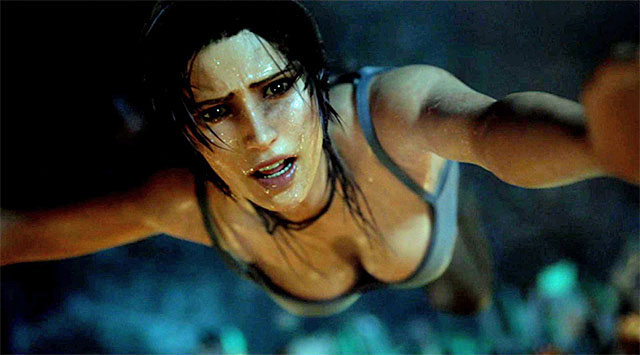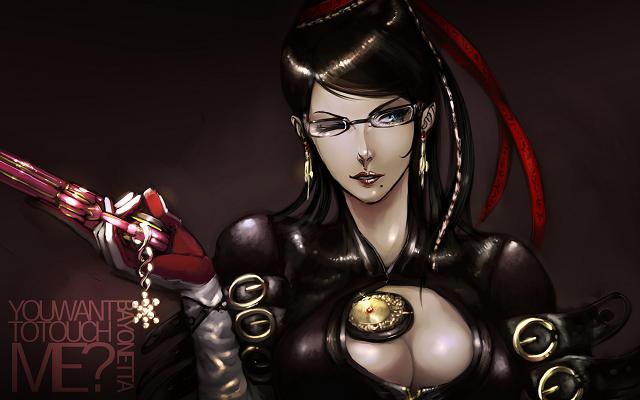As the saying goes, behind every successful man there is a woman; so taking that notion a step further – behind a successful game there is a strong woman character that is either a damsel in distress or the one taking charge of the game on her strong shoulders. She kicks ass, puts bad guys behind bars or even kills a few to save the day.
 Let’s start with the 80s, the era of Nintendo arcade games which saw Donkey Kong from the company scaling new heights and saw then ‘Jumpman’ saving Pauline from the clutches of Donkey Kong. Jumpman became Mario in Nintendo’s 1985 game Super Mario Bros. to save Princess Peach from Bowser. These games were about the male characters defeating villains and saving the lady in need.
Let’s start with the 80s, the era of Nintendo arcade games which saw Donkey Kong from the company scaling new heights and saw then ‘Jumpman’ saving Pauline from the clutches of Donkey Kong. Jumpman became Mario in Nintendo’s 1985 game Super Mario Bros. to save Princess Peach from Bowser. These games were about the male characters defeating villains and saving the lady in need.
In the later years, a lot of games with a similar premise came up, where saving women or a woman became the ultimate goal of the game. The Legend of Zelda and Prince being some of the most renowned games that had a storyline where one had to play the hero to save the lady in trouble.
In 1985, Namco came up with Baraduke, a side scrolling arcade game where Toby Masuyo (“Kissy”) became the first human female character in video games, (where for a change) a woman was doing all the saving instead of waiting to be saved. It predated Nintendo’s more successful franchise Metroid where players took on the role of Samus Aran, an intergalactic bounty hunter and spent the entire game exploring the Planet Zebes – fighting off space pirates and dangerous Metroid life forms all along the way. After exploring and beating the game, Samus Aran is, beneath all the armor and weaponry, a woman. Back in 1981, Ms. Pac Man was leading the charge when she became the first woman character in video games.
According to data gathered by Electronic Entertainment Design and Research (EEDAR), only a few video games have exclusively female heroes. This is in part because, according to EEDAR, “there’s a sense in the industry that games with female heroes won’t sell”.
This changed since Tomb Raider raided the video game industry with a reboot in 2013. Lara Croft, the protagonist of Tomb Raider, is among the best-known strong, fictional women in video games. Tomb Raider games became an instant hit and has been critically acclaimed due to its aggressiveness and violent nature of Lara Croft, who was also a favourite among new age gamers. Characters like Jade from Beyond Good and Evil and April from The Longest Journey are some of the characters that have been compared to Lara but with less prominent physical feminine attributes than Lara but more feminine psychological traits.

Even when Tomb Raider was made into a movie with Anjelina Jolie as the lead, the biggest criticism was of Jolie having large breasts. However, this stems from the fact that the original game itself was criticized for the character Lara Croft’s unrealistic breast size. The creators on the other hand replied that this aspect was Lara’s natural style and not a marketing stunt that they had done to get men’s attention.
Games since have had characters like Faith Connors who’s played the protagonist in 2008’s adventure game Mirror’s Edge and has received major acclaims for the fact that the focus was more on the character design rather than her sexual appeal. Also, characters like Mona Sax from Max Payne series come to mind when talking about tough characters in video games that have left a lasting impression on gamers’ minds just as Max Payne. Supporting characters like Cortana, from Halo too have had major impact on gamers and who can forget the last scene where she saves Master Chief when he is destroying Composer making it one of the most emotional moments in video game history. Alyx Vance of Half-Life 2 with her intelligence and personality made for a very good support of Gordon Freeman.
Objectification of women has been one of the reasons where the industry has been criticised by the various women organisations. Bayonetta is one game that comes to mind when someone talks about the topic. The much acclaimed game has been a conversation point considering her outfits and the shots the game has to offer. Bayonetta is sexualised but not a sex object. She has her own standing in the game and makes the game what it is supposed to be – a medium of entertainment.

Women too have their fair share of playing negative characters in the video games. Where one had Chell in Portal, playing a lab rat testing for Aperture Science solving puzzles to reach the finale, GLaDOS on the other hand was one character you wouldn’t want to mess in real life. Ultimecia, the primary antagonist in Final Fantasy VIII, was also a badass character that gave Squall a run for his money. Games like God of War, Borderlands and F.E.A.R have feline ferocity which would make male villains stain their pants.
There have been controversies in the industry too with last year’s Gamergate taking centre stage and taking the industry by storm. It first came to light when Zoe Quinn’s new game Depression Quest was released and her boyfriend in his blogpost wrote that she had an affair with Kotaku journalist Nathan Grayson which may or may not have led to Grayson writing good reviews about the game. Gamergate expanded to feminist cultural critic Anita Sarkeesian who received death threats forcing her to leave her home temporarily. Sarkeesian said she believes women are being targeted because they are ‘challenging the status quo of gaming as a male-dominated space.’ Many have come to the support of these women; Sarkeesian fairly recently got a character based on her in the game ‘TowerFall’.
There have been many research/white papers that have attempted to understand the demographics of women in the industry, and most of them claim that there is almost an equal number of male to female gamers in the world. Thus, game developers too need to evolve and create games that cater to both genders and also respect their sexuality.
